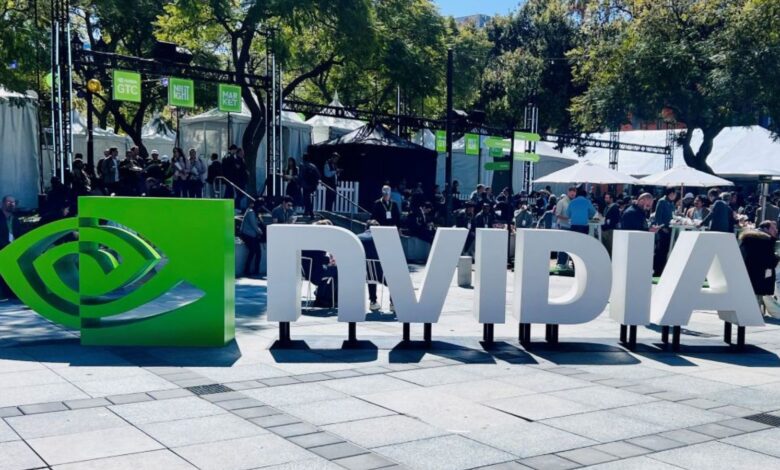GTC 2025: How NVIDIA’s game-changing innovations could shape India’s AI future | Technology News

In October 2024, Nvidia CEO Jensen Huang, at the AI Summit India in Mumbai, claimed that the headline “Nvidia is AI in India” was more than just a fortuitous combination: it described a deep connection between the company and the future of AI in the country.
Six months later, Huang has now promised more computational power at Nvidia’s premier tech conference GTC 2025. From the announcement of its next GPU chip, Blackwell Ultra, to the teasing of an even faster chip system called Vera Rubin, it has been a week that serves as an inflection point for AI. Could the same be said for India?
Story continues below this ad
Here are some of the ways GTC 2025 might shape the future of AI in India.
Enterprise AI solutions for every use case
Nvidia has arrived at its world-beating position perfecting the science of collaboration. aligning itself with the world’s best tech and IT companies, it has shown why it remains an essential part of AI innovations in multiple use cases.
This was no different for Indian IT giants who were at GTC 2025 to present their AI and machine learning solutions. This included Tech Mahindra’s new AI-powered solution to increase drug safety management and an announcement L&T Technology Services (LTTS) of an AI-powered railway track inspection solution. More tools were also on offer heavy hitters like Wipro, Infosys, TCS and HCL Tech, all of whom leveraged Nvidia’s GPUs to scale their solutions.
The prominence of Indian enterprise-scale companies was not lost on those attending GTC from abroad either. “We saw a strong turnout from Indian companies and startups at GTC 2025,” said Matan Libis, VP of Product at SQream, lauding companies like TCS and Tech Mahindra for their AI-driven solutions in fields as diverse as finance and healthcare. “It was a great reminder that India’s AI scene is booming.”Story continues below this ad
Libis was there to showcase his company’s flagship product, SQreamDB, a GPU-based data warehouse, as well as unveil their new end-to-end ML acceleration framework to handle data ingestion, transformation, training, and inference, all on Nvidia’s GPUs. “ using GPUs to analyse large datasets faster, businesses in India can skip the typical ‘sample and hope for the best” approach.” Libis said, adding that Indian companies would be better off working with complete datasets, getting more accurate insights, and reducing spending on infrastructure. “If India is going to keep leading in AI, this kind of scalable, high-speed analysis is going to be essential.”
Indian Startups at GTC 2025
Generative AI wasn’t limited to Indian enterprise companies at GTC 2025. It also reserved a space for Indian startups as well. This included the work of startups like Sarvam AI in agentic AI, where the startup presented its work in voice-led, multilingual AI solutions in a panel titled “Building Generative AI for a Billion Indian Voices”.
AI startups showcasing innovations at NVIDIA GTC 2025, highlighting advancements in enterprise AI, automation, and intelligent solutions. (Image: Vegam Solutions)
Subramanyam Khasibhat, CEO of startup Vegam Solutions, spoke of how inspiring it was to see a presence of Indian startups at the event, with many pushing the limits of what’s currently possible. Speaking to the , Khasibhat stated that his company’s aims were to showcase their AI tools for manufacturers, forge new partnerships and learn from newer innovations. “We could see what the industry is gunning for when it comes to Gen AI,” Khasibat said during the event on Thursday. “The audience was multifaceted, with investors, business leaders, and system integrators, along with IT giants and CTOs. So we really had an opportunity to present our solution to an elite audience.”
It’s time for physical AI
The theme that received the most coverage at GTC was Nvidia’s ambition to push beyond agentic AI into the world of physical AI, where robotics and automation begin to dominate our physical spaces. From the unveiling of Nvidia’s foundational model for humanoid robotics, Groot N1, to exciting advances in autonomous vehicles, India stands to gain much from the developments of GTC 2025.Story continues below this ad
“It’s very clear that physical AI and optimisation are the start of the next Industrial Revolution,” Mark Ostroot, Director of Engineering at SimpleRose, said in response to the announcement of the push to physical AI. “Many large companies, especially in growing sectors like India, will need to enhance their decision-making with AI and optimisation as part of this new industrial revolution,” Ostroot said, adding that SimpleRose, a business optimisation platform, was looking to partner with Indian companies looking to tackle logics or supply chain problems in this space.





